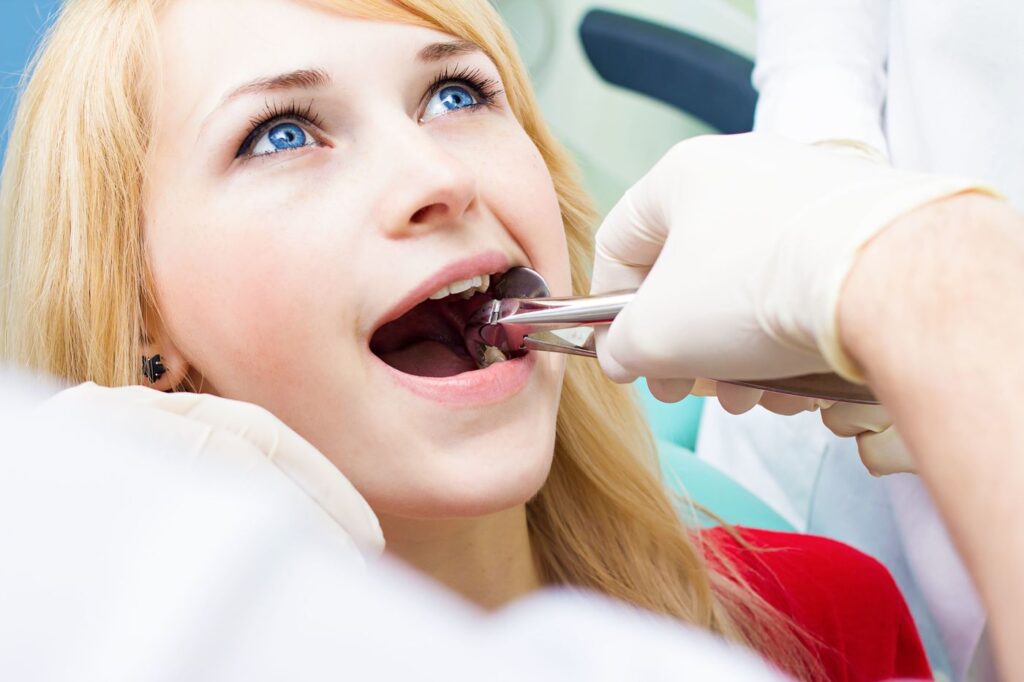
A tooth extraction is a dental option where a tooth is surgically removed from the dental alveolus or socket. The extraction of a tooth is mainly conducted by an oral surgeon. However, as part of their key skills as dental providers, general dentists and periodontists also carry out tooth extraction procedures.

When does one undergo a tooth extraction?
There are five primary reasons for tooth extraction:
Impaction
Tooth impaction happens as one tooth ‘s growth directly pushes against another. The tooth is susceptible to infection, resulting in gums that are red , swollen, sore, or bleeding. People also report pain and swelling around the jaw and trouble opening their mouths when they experience this condition.
Typically, wisdom teeth, the third collection of molars that do not have enough space in the mouth to develop upright, are the culprit for this condition, so they develop inward into the rest of the teeth instead. In these situations, to avoid any damage to the other teeth, it is best to get the wisdom teeth removed as soon as possible in order to avoid pain or forestalling crooked teeth.
Tooth Decay
The tartar and plaque build-up induces tooth decay. Eating away at the enamel of the teeth, these deposits make them thin and brittle. If the condition gets severe enough, an infection that causes extreme pain , swelling, and redness may develop. When a tooth reaches this stage, to prevent further health problems, it may be appropriate to remove theloose tooth entirely and replace it with a dental bridge.
Periodontal or Gum Disease
Similar to tooth decay, the build-up of plaque and tartar on the teeth also causes periodontal and gum disease. Although there are several different disorders in the gums and bone surrounding the teeth that people can develop, gingivitis and periodontitis are the two most common.
Inflammation of the gums covering the teeth is gingivitis, while inflammation of the bones and tissues surrounding the teeth is periodontitis.
To protect the underlying teeth, if the integrity of the bone or gum around the tooth deteriorates too much, then it might be appropriate to remove the tooth in lieu of a dental bridge or dental crown.
Disease of Periodontal or Gum
Similar to tooth decay, the accumulation of plaque and tartar on the teeth often leads to periodontal and gum disease. Although there are many different conditions that people can develop in the gums and bone surrounding the teeth, gingivitis and periodontitis are the two most common.
Gingivitis is inflammation of the teeth surrounding the gums, while periodontitis is inflammation of the teeth surrounding the bones and tissues.
If the integrity of the bone or gum around the tooth deteriorates too much, then to preserve the surrounding teeth, it may be necessary to remove the loose tooth in favour of a dental bridge or dental crown.
Trauma
In an accident, teeth are often some of the first casualties. Accidents can wreak havoc on your teeth, whether it has to do with a stray baseball coming at you at record speed or being involved in a car crash.
An accident sometimes causes a tooth to become too damaged to save. When this is the case, an emergency tooth extraction is a necessary component of the process of recovery. Otherwise, a damaged tooth could become severely infected and ultimately require a procedure that can be just as painful, such as a root canal.
Overcrowding
In addition to pain, tooth impaction can also lead to overcrowded teeth, which can cause straight and well-aligned smiles to become crooked elsewhere. Removing the troublesome teeth in the back of your mouth will open up free space for the rest of your teeth to spread out as desired, without the need for braces, while keeping your smile straight.
Lastly keep in mind, it is essential to remember that before going ahead with a tooth removal your dentist will try every other remedy possible. In some cases, however, removing the tooth entirely is the only way to protect your mouth.





More Stories
Potential Applications And Challenges Of Artificial Intelligence In Healthcare
7 Ways Soy Helps Our Body Stay Healthy And Fit
The Amazing Health Benefits Of Bananas You Never Knew!